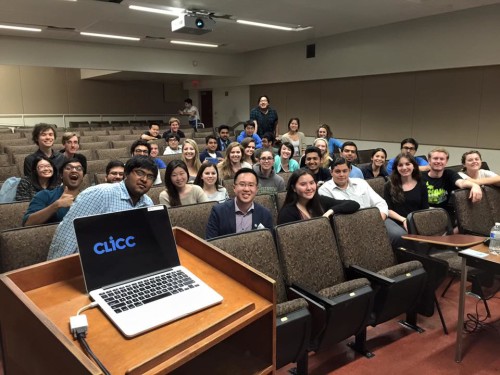
Best Delegate co-founder Kevin Felix Chan with the UCLA Model UN club
Recently, I delivered a guest lecture at my alma mater, UCLA, about Global Trends in Model United Nations. I shared how UCLA was a cutting-edge Model UN program when I was a student there: we started our travel team, started our college conference (the first crisis conference on the West Coast), and was part of the Global Classrooms movement to bring MUN to the inner-cities. At the time, only ten universities in the world had a high school conference, college conference, and travel team, and I was proud that UCLA became one of those ten.
But nowadays, that list has grown as college Model UN programs have developed. It is no longer that innovative to host a collegiate crisis conference or field a Model UN team that travels cross-country or even internationally. And multiple universities now have outreach programs that are not necessarily affiliated with Global Classrooms. So what could make a college MUN program innovative in 2016? Here are three trends that colleges could latch onto:
1. Expanding MUN to a new demographic
Model UN is growing at all geographic and academic levels. Geographically, there are many regions that are seeking outside expertise to help build their circuits or import conferences that could set some quality standards. Academically, MUN is moving to the lower ages such as middle school and elementary school. Geographic expansion is harder for most universities; it requires a strong global brand and institutional connections that only a few conferences may have (e.g. HMUN, YMUN, and ILMUNC which have all expanded abroad). Expanding to the middle school level may make more sense because it would come from the same local market as the high school delegates. The key to success is to establish partnerships with the high schools attending your conference so that they could help do outreach and build your middle school conference.
2. Refining MUN simulations as they evolve
Model UN is ironically evolving in two ways that some could argue are complete opposites of each other. The first way is that many more committees are now crisis committees. However, crisis committees have yet to be refined; many of them lack pedagogical thought or sometimes even educational value. Crisis committees could be better designed with more educational pedagogy and international relations theory in mind. The second way is that there is a nascent UN4MUN movement — simulating the UN accurately using rules of procedure created by the UN Department of Public Information as opposed to the parliamentary procedures that MUN has been inaccurately using. Essentially, there is a lot of room for thought leadership in expanding what Model UN should be in the coming years.
3. Incorporating 21st-century technology into MUN
Forget the debate about whether laptops should be allowed in committee or not.In the next few years, the laptop debate will almost be as silly as a professor barring you from taking notes using a laptop in class. Technology such as tablets are fully integrated into the educational experience of elementary school students nowadays, and it’s only natural for students to use a device and Internet in class. But technology already goes so much further than that for MUN. There’s MyMUN for conference registration. There are multiple speaker list softwares and now even a chairing app called Rapporteur. Multiple conferences make their own mobile apps. Several Southern California high schools (Mira Costa, Huntington Beach, Tustin) have their own conference softwares with chairing dashboards, abilities for advisors to see the speakers list and speaking tallies from their own devices, and chatting abilities that eliminate the need for note-passing. MUN could even be done online now through Online MUN. Technology is part of 21st century education, and the leading MUN conferences will find ways to incorporate it into the educational experience.


